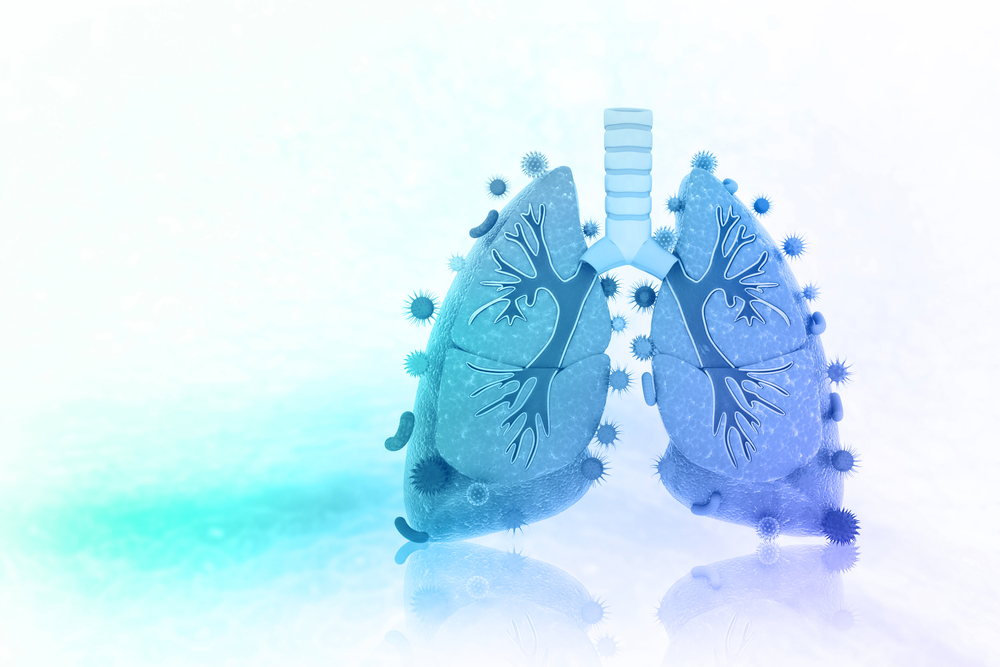Expansion of Unusual Stem Cell Subsets May Drive COPD Progression, Study Suggests

People with chronic obstructive pulmonary disease (COPD) have three unusual stem cell subsets in their lungs that, together, seem to contribute to the inflammation, tissue scarring, and excessive mucus secretion that characterizes the condition, a recent study has found.
The research suggests that changes in lung stem cells, which were regarded as secondary to COPD progression, may actually be key drivers of the condition. Researchers are now working to target these abnormal stem cells as potential therapeutic approaches for the disease.
Their study, “Regenerative Metaplastic Clones in COPD Lung Drive Inflammation and Fibrosis,” was published in the journal Cell.
COPD is a chronic lung condition characterized by inflammation, airway occlusion due to mucus buildup, tissue scarring (fibrosis), and damage to the air sacs in the lungs. While exposure to lung irritants, such as those in tobacco smoke, is a major driver of COPD, the disease continues to progress even after patients cease their smoking habits. This has raised the hypothesis that other processes may also drive the condition.
When an air passage is irritated (like from smoking), the cells lining it can change from a normal shape (basal cells) to being flatter and stacked on top of each other (squamous cells) or become mucus-producing cells (goblet cells).
This process, called metaplasia, is normally transient, and when the irritation disappears, the lining cells return to their normal appearance. But in people with COPD, metaplasia appears to persist long after smoking cessation.
In the study, a team led by professors Frank McKeon and Wa Xian, at the University of Houston, aimed to investigate if the reason for this was due to irreversible changes in the lung’s stem cells.
The researchers examined lung samples from 19 COPD patients and 11 controls without the disease. While stem cells from normal lungs originated cells normally found in the airways, stem cells from COPD patients were more heterogeneous, segregating into four different clusters.
Cluster 1 was similar to that of normal lungs, but the remaining ones were differentiating into goblet cells with the ability to secrete mucus (cluster 2), and into squamous cells that could drive inflammation (cluster 4) or tissue scarring (clusters 3 and 4).
Using lung samples from five additional donors without lung disease and 10 end-stage COPD patients, the team confirmed that while metaplastic lesions were rare in normal lungs, the airways of COPD patients were filled with metaplastic goblet and squamous cells.
In fact, goblet cells occupied 32.7% of the patients’ airways, and squamous cells 26.8%, while their proportion in normal lung airways was 5.7% for goblet cells and less than 1% for squamous cells.
To determine whether these cells could contribute to disease progression, the team injected cells from each of the 19 COPD patients and 11 controls into mice.
While cells from the controls produced empty epithelial cysts with normal basal properties, those of COPD patients produced cysts that were filled with inflammatory cells and surrounded by dense layers of fibroblast-like cells — cells that cause fibrosis, or tissue scarring.
Additional analysis found that all four clusters were able to drive this inflammation, but that cluster 4 had the strongest effect, with cells from this cluster producing large amounts of pro-inflammatory molecules. As for fibrosis, it was driven by cells in clusters 3 and 4.
“The long-overlooked metaplastic lesions in COPD were, in fact, driving the disease rather than merely secondary consequences of the condition,” McKeon said in a university press release.
Xian added: “We actually found that three variant cells in all COPD patients drive all the key features of the disease. One produces tremendous amounts of mucins [the main component of mucus] which block the small airways [cluster 2], while the other two drive fibrosis and inflammation [clusters 3 and 4] which together degrade the function of the lung. These patients have normal stem cells [cluster 1], though not many of them.”
The team also found these unusual stem cells in fetal lungs, where they are likely needed to fight off infections, suggesting that it is the irreversible expansion of these stem cells that may be driving the disease.
“There are two implications of this work,” the researchers wrote. “One is that these … variants are stem cells respectively committed to metaplastic lesions that, in turn, promote the fibrotic and inflammatory processes observed in COPD. The second is that these variant cells or the factors they secrete may represent important therapeutic targets in this disease.”
According to Xian, “as we now know the specific cells responsible for COPD pathology, we can target them, much as we would cancer, with specific drugs that selectively kill them off and leave the normal cells to regenerate normal lung tissue.”





